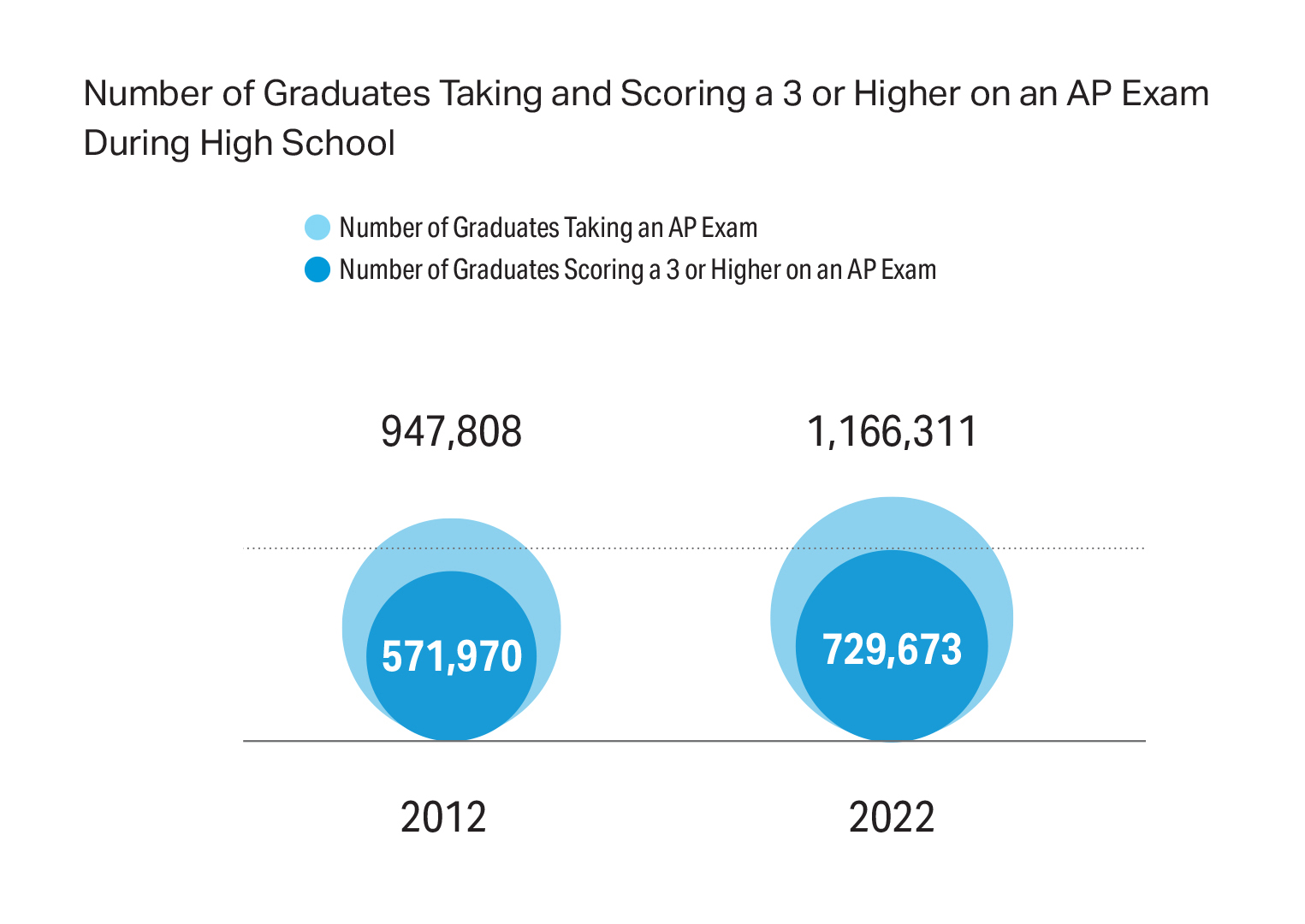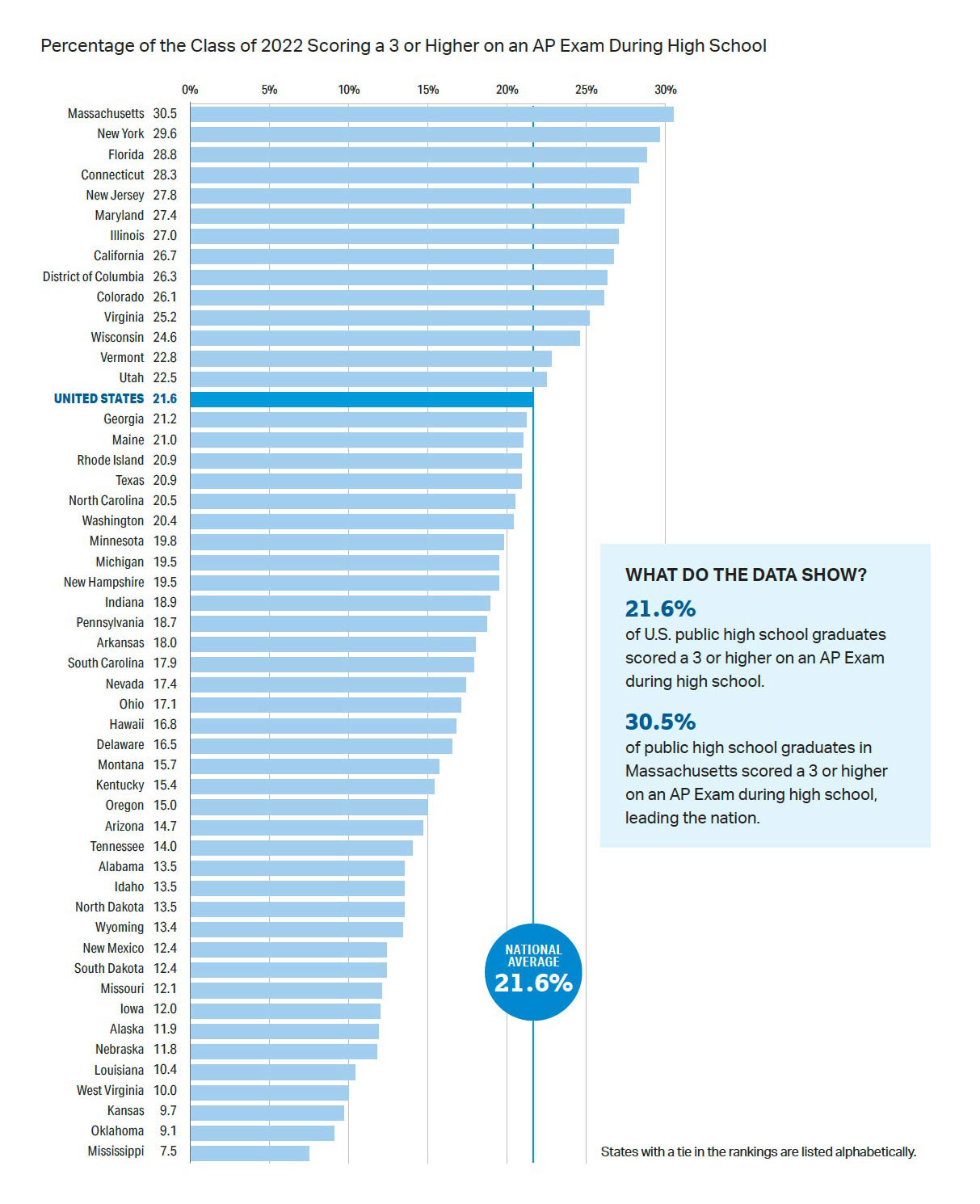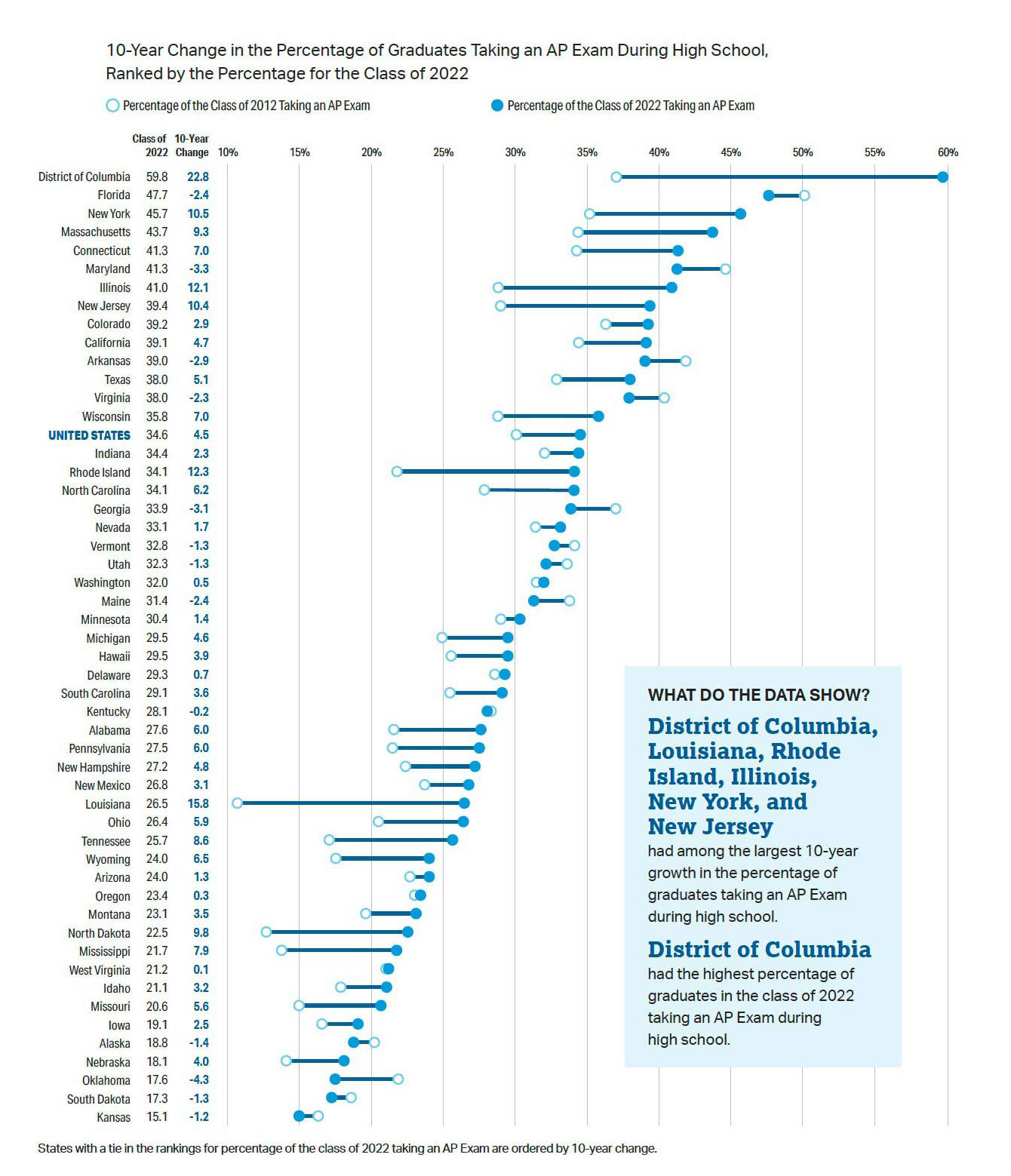AP Program Results: Class of 2022
Celebrating the Class of 2022
Between 2012 and 2022, the percentage of U.S. public high school graduates who took an AP Exam has increased, as has the percentage of U.S. public high school graduates who scored a 3 or higher on at least one AP Exam.
- 1,166,311 students in the class of 2022 (34.6% of U.S. public high school graduates) took at least one AP Exam, up from 30.1% of the class of 2012.
- 729,673 students in the class of 2022 (21.6% of U.S. public high school graduates) scored a 3 or higher on at least one AP Exam, up from 18.2% of the class of 2012.
National Highlights
- Nearly 1.2 million students in the class of 2022 took more than 4 million AP Exams in public high schools nationwide, as educators across the country encourage a wider and more diverse population of students to participate in AP.
- 34.6% of 2022 U.S. public high school graduates took at least one AP Exam during high school, and 21.6% of the graduating class scored a 3 or higher on at least one AP Exam.
- Over the past 10 years, the percentage of all U.S. public high school graduates earning a score of 3 or higher on at least one AP Exam has grown by 3.4 percentage points. More than 1 in 5 American public school graduates score 3 or higher on at least one AP exam.
- 402,498 traditionally underrepresented students—including Black/African American, Hispanic/Latino, and American Indian/Alaska Native students—graduated in 2022 from U.S. public high schools having taken at least one AP Exam, up 143,176 students from 2012.
Measuring Success
A state’s success with AP is measured by a combination of access and performance.
States are ranked by the percentage of the public school students in the state’s graduating class scoring a 3 or higher on an AP Exam during high school.
This percentage shows the proportion of the graduating class that demonstrated college-level mastery through AP during high school. Each graduate who scores a 3 or higher “counts” only once toward the percentage, regardless of how many AP Exams they take or how many scores of 3 or higher they receive. As a result, this measure highlights inclusivity and reveals the extent to which the graduating class is receiving adequate preparation and fair access to AP.
Educators and policymakers can use this measure to gauge the overall success of their graduates with AP. Schools receive similar information in their score reports, which they use to compare their own AP success to results in their state and nationwide.
Participation Matters
Students take AP courses in high school, in part, for the chance to earn college credit, advanced placement, or both from a score of 3 or higher on an AP Exam. However, new evidence confirms what AP teachers say and know to be true: Students benefit from taking AP courses and exams, regardless of their exam scores.
New findings highlight how AP students who earn scores of 1 and 2 benefit from their experiences in AP:
- Students are more likely to enroll in a 4-year college. AP students, including those with average scores of 1 or 2, are more likely to enroll in a 4-year college, compared to academically similar students who didn’t take AP in high school.
- Students perform as well or better in introductory college courses. Students who earn AP scores of 2 are well prepared to succeed in introductory college coursework. Compared to academically similar college peers who didn’t take an AP course, AP students who earn scores of 2 perform as well or better when they take those introductory college courses.
- Students go on to score higher on subsequent AP Exams. Many students who first score a 1 or 2 on an AP Exam will take further AP courses and score higher.
States have made progress to increase participation in AP over the last 10 years.


